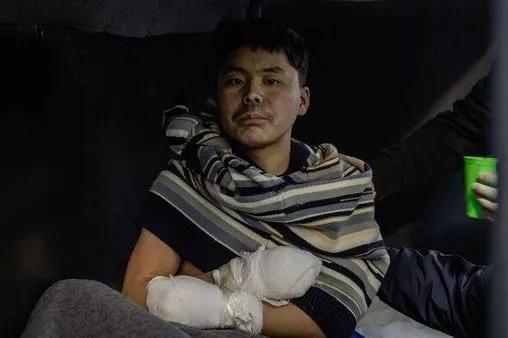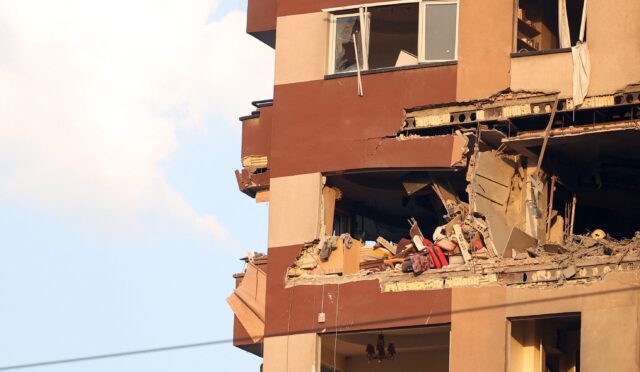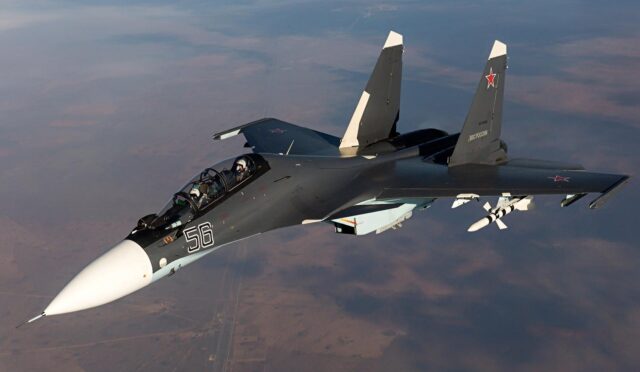North Korean Military Losses in Ukraine
Approximately 300 North Korean soldiers have died, and around 2,700 have been wounded while participating in the ongoing conflict in Ukraine, according to a statement made by a South Korean lawmaker on Monday. This information was reported by Seoul’s intelligence agency, which has been closely monitoring the situation. Initially, it was reported that North Korean leader Kim Jong Un had dispatched over 10,000 troops to support Russian forces, describing them as ‘cannon fodder’ in exchange for technical assistance for North Korea’s weapons and satellite programs.
In a recent briefing, lawmaker Lee Seong-kweun revealed that the deployment of North Korean forces has extended to the Kursk region, significantly increasing the casualty count among these troops. Lee emphasized that the situation remains dire, with estimates of North Korean casualties exceeding 3,000, which includes the 300 confirmed deaths and 2,700 injuries.
Captured North Korean Soldiers
Over the weekend, Ukrainian President Volodymyr Zelensky announced the capture of two North Korean soldiers, releasing video footage of the injured combatants being interrogated. This development raises the prospect of a prisoner exchange, potentially involving Ukrainian soldiers currently held by Russian forces. The captured soldiers’ accounts have sparked interest in negotiations for their return.
During the interrogation, one of the soldiers expressed that he was unaware he was being sent to fight in a war, as he had been informed by his commanders that he was simply undergoing training. The footage showcases the soldiers’ injuries and their complicated circumstances, with one indicating a desire to return home while the other expressed a willingness to adapt to his situation.
Desperate Measures Among Troops
Reports suggest that North Korean soldiers, particularly those from the elite Storm Corps, have been instructed to take drastic measures to avoid capture. Lee Seong-kweun explained that memos found with deceased soldiers revealed that North Korean authorities had pressured them to commit suicide or self-detonate rather than be taken prisoner. This reflects the extreme conditions these soldiers face and the mentality instilled in them by their leadership.
In a striking incident, a North Korean soldier, on the brink of capture, reportedly shouted ‘General Kim Jong Un’ and attempted to detonate a grenade before being shot down. Such actions illustrate the desperation and indoctrination among these troops, who are caught in a conflict not of their choosing.
Lack of Preparedness for Modern Warfare
The analysis conducted by the National Intelligence Service (NIS) indicates that North Korean soldiers are ill-prepared for the complexities of modern warfare. Lawmaker Lee remarked on the significant number of casualties among North Korean troops, attributing this to their inadequate training and understanding of contemporary combat strategies.
As the conflict continues, the implications of North Korea’s military involvement raise concerns not only for the soldiers but also for regional security dynamics. With ongoing military cooperation between Russia and North Korea, the situation is likely to evolve further, compelling international attention.
Future Diplomatic Engagements
Looking ahead, Lee Seong-kweun suggested that U.S. President-elect Donald Trump might seek to re-engage in dialogue with Kim Jong Un, potentially paving the way for diplomatic discussions in the upcoming year. He also speculated that Kim could consider visiting Russia in the first half of the year following a meeting with Russian President Vladimir Putin.
Such diplomatic overtures could reshape the political landscape, especially if they lead to discussions around military cooperation and regional security. The interplay between North Korea’s military engagements and its diplomatic maneuvers will be critical to watch.
Zelensky’s Offer for Exchange
In a recent social media post, President Zelensky highlighted Ukraine’s willingness to return the captured North Korean soldiers if a prisoner exchange can be arranged for Ukrainian warriors held in Russia. This statement underscores Ukraine’s ongoing commitment to negotiate for its soldiers while also revealing the complexities of international military relationships.
Zelensky further indicated that more North Korean soldiers could be captured in the future, suggesting that the conflict may continue to draw in additional troops from North Korea. For those North Korean soldiers who may not wish to return home, alternative options could be explored, reflecting the challenging choices faced by individuals caught in the crossfire.
Accusations of Troop Deployments
Ukraine, along with the United States and South Korea, has accused North Korea of sending over 10,000 soldiers to bolster Russian forces in the conflict against Ukraine. Despite these claims, neither Moscow nor Pyongyang has confirmed the presence of North Korean troops on the battlefield, contributing to the ongoing tension surrounding military alliances.
The collaboration between Russia and North Korea has intensified since the onset of Russia’s invasion of Ukraine in 2022, with both nations seeking to enhance their military capabilities. The evolving nature of their partnership raises critical questions about the future of regional security.
U.S. Concerns Over Military Collaboration
During a recent visit to Seoul, U.S. Secretary of State Antony Blinken expressed concerns regarding the deepening military collaboration between Russia and North Korea. He indicated that the United States believes Russia is expanding its space cooperation with North Korea in exchange for troop contributions in Ukraine.
Furthermore, Blinken suggested that Russia may be on the verge of formally recognizing North Korea as a nuclear power, which would have significant ramifications for international relations and security dynamics in the region.
Interrogation Footage Reveals Soldier Experiences
The video footage released by Zelensky showing the interrogation of the two captured North Korean soldiers provides a glimpse into their experiences. One soldier is seen lying on a bunk bed, while the other sits up with visible injuries, highlighting the harsh realities faced by these troops.
During the interrogation, one soldier claims he was misled into believing he was participating in training exercises rather than engaging in combat. Such revelations not only shed light on the soldiers’ experiences but also raise questions about the ethical implications of their deployment in such a conflict.







